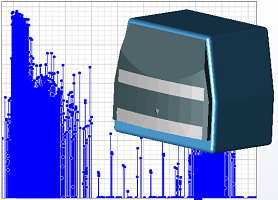The content below highlights the features included in this initial WaveFarer release and outlines the general project workflow. Links to tutorials and sample macros for post-processing are also provided, and a full list of capabilities is available in the Reference Manual.
Geometry Creation
Built in geometry provides options for creating primitives and modifying them using the 2-D sketcher. For example, a cuboid added to a project could then evolve into a road, bulding, or street sign by applying an extrude or Boolean modeling operation, respectively.
WaveFarer supports various file formats, so editing tools can also be used to build complex scenes by modifying imported CAD models.
Movement
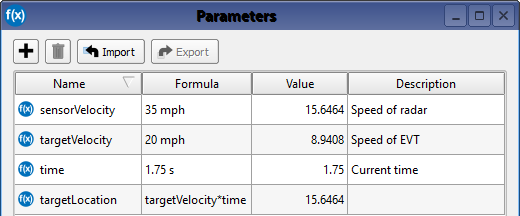
Existing geometry can be moved using WaveFarer's parameters list to define a distance, angle, or velocity. The parameter can then be applied to move a single object from one location to another. This movement confirms that the parameter will behave as expected, and generates all of the results together in one simulation for streamlined post-processing.
Parameterized geometry follows either a straight line or arch, but objects can also be moved along more complicated paths through the scripting API. This capability allows users to combine and execute a series of movements that animate the scenario, such as a car changing velocity on a curvy road.
Materials: PEC, Dielectrics
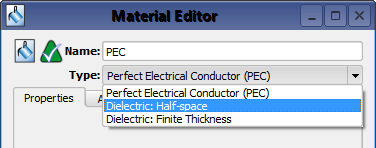
Within WaveFarer, users can assign different materials to various parts, such as a perfect electrical conductor (PEC) material for metals and highly reflective objects. Conductivity, permativity, and surface roughness values can be adjusted for dielectrics, which users can assign to non-metal features. These material definitions accurately represent objects that compose complex scenes, such as asphalt, wet surfaces, rubber, and power lines.
Antenna Types
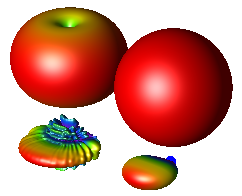
Directional and user-defined antennas are among the four different antenna types available for selection when creating a transceiver. Directional antennas can be specified and used for medium or long range radar patterns.
Users can also import antenna patterns from previous simulations or measurements in order to test existing antennas designs.
Ray Tracing Analysis Configuration
WaveFarer's ray casting fully illuminates a target with the largest number of rays possible in order to generate a high-fidelity signal. Users can control the resolution of this return by adjusting the number of interactions along a ray path in the analysis configuration settings. These options also allow changes to the atmosphere with humidity, pressure, and temperature settings to create a highly detailed simulation.
Output: Received Power, Complex Impulse Response
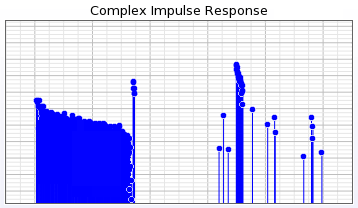
The complex input response and received power outputs provide a range of post-processing options. Raw radar returns provide a received signal based on all of the rays directed at one object, such as a car, for high-accuracy in time-domain complex impulse response. This capability assists with signal process algorithms and target identification, as well as post-procesing into doppler range output.
Single-quantity received power gives users a total value for all of the rays and information about the strength of the signal reflected from the target versus the angle of incidence. This output helps to users understand how the vehicle looks to radar.
